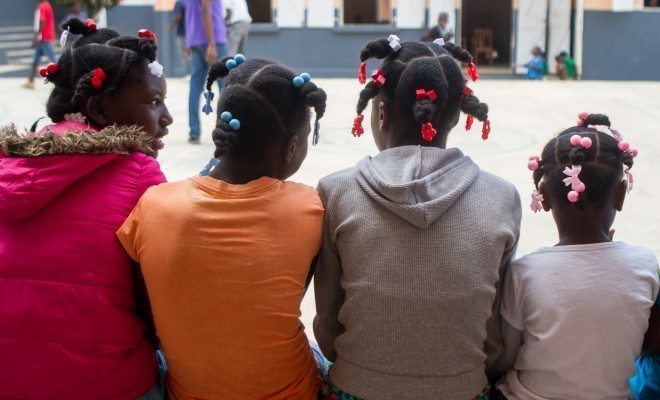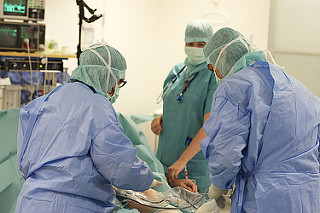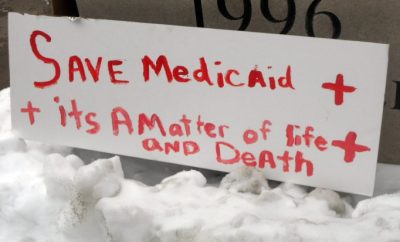 Image courtesy of [Worldwide Orphans]
Image courtesy of [Worldwide Orphans]
World
Defining Orphans: The World’s Most Vulnerable Children
Sponsored Content
According to UNICEF, there are 153 million children across the globe who are defined as orphans. These children, and others, are at risk for poverty, health concerns, neglect, and abuse. They are the world’s orphans. Read on to learn about how children can become orphans, what it means to be an orphan, and how underlying social problems lead to children being orphaned.
No Easy Definition
The definition of an orphan is not just a child who has lost both parents–instead, many international bodies recognize as orphans children who have lost one or both parents. Moreover, orphans aren’t necessarily children who are in need of homes. Many orphans live with grandparents, aunts or uncles, or other family members.
The expansive definition was created out of a desire to recognize that a child who does not have one or both parents may be vulnerable in some way, whether that is a lack of support, resources, or opportunity. The United Nations Children’s Fund (UNICEF) explains the move to the broader definition of orphan as follows:
This definition contrasts with concepts of orphan in many industrialized countries, where a child must have lost both parents to qualify as an orphan. UNICEF and numerous international organizations adopted the broader definition of orphan in the mid-1990s as the AIDS pandemic began leading to the death of millions of parents worldwide, leaving an ever increasing number of children growing up without one or more parents. So the terminology of a ‘single orphan’ – the loss of one parent – and a ‘double orphan’ – the loss of both parents – was born to convey this growing crisis.
There are also many children whose parents may be alive, but live far away or are otherwise unable to care for their children. Overall, the global definition of orphan as followed by many aid and advocacy organizations focuses on aiding children who lack in support, protection, and/or caregiving.
How do children become orphaned?
There are countless ways that children can lose one or both parents, or be put in a position where they don’t have support. It’s almost impossible to make a full list, but some of the most pressing and prevalent include children in refugee camps from war and conflict, poverty or abandonment, family turmoil, or social isolation. Each of these problems comes with its own challenges and requires unique resources and approaches, and many orphans can face more than one of these challenges.
Refugee Camps, War, and Conflict
There are a few different ways that children can end up in refugee camps. The two most common are natural disasters and conflicts that force children and families from their homes. Often those disasters or conflicts kill one or both of a child’s parents, or leads to the child being separated from them. Internationally, according to the United Nations High Commissioner for Refugees (UNHCR), approximately half of the world’s refugees in 2013 were under the age of 18. That proportion is borne out by statistics of people living in refugee camps, as children also amount to half of the overall refugee population in camp-type accommodations.
Children in refugee camps face unique challenges. Malnutrition is prevalent in refugee camps, particularly among very young children. The Centers for Disease Control (CDC) found that in South Sudanese refugee camps in Ethiopia, malnutrition rates for children under the age of five ranged from approximately 25-30 percent.
Refugee camps are also fertile ground for preventable diseases, both because of the crowding that occurs at camps, as well as a lack of access to hygiene materials or proper sanitation. Take the camps set up in Syria in light of the recent civil conflict there, for example. Those Syrian camps are seeing cases of measles and even polio.
Refugee camps create an obviously unusual environment for a child to grow up in. Institutions that provide support and education for children, such as schools, are not necessarily found in refugee camps. For refugees who are constantly on the move, children may not have the ability to work with one school or one teacher consistently enough to build strong educational skills, and schools may be open only once a week for certain age groups.
Children who are refugees, whether in camps or in less structured situations, also have to become the breadwinners for themselves, and possibly for younger children in their families as well. This leads to an influx of child labor. In Syria, UNICEF estimates that one in ten of the refugee children there are engaging in labor in an attempt to support themselves.
While there are many difficulties that children, particularly those who have lost one or both parents, in refugee camps have to contend with, these are some of the most prevalent.
Poverty
Many children who are at risk and are considered “orphans” grow up under conditions of extreme poverty. Poverty is often cyclical–a child born into poverty may lose his parent to illness or a number of other causes. Then, he doesn’t have the resources to provide for himself and will likely fall victim to malnutrition and illness, and will not be able to pursue an education. Subsequent children are then born into poverty as well, and the cycle continues.
Poverty can also lead to “social orphans.” Those are children who haven’t necessarily lost one or both parents, but whose parents can’t take care of them. According to Worldwide Orphans CEO & President Dr. Jane Aronson, children in institutions such as orphanages in Bulgaria are mostly those who do have surviving parents; only two percent are “full orphans”–meaning both parents are deceased. It’s difficult to estimate how many children are social orphans, but in some nations the problem is clearly profound. For example, UNICEF estimates that 70 percent of Moldova’s children in residential care are social orphans.
HIV/AIDS Crisis
With the rise of the HIV/AIDs crisis, more and more children are orphaned every day. In addition, many children who become orphans because of HIV/AIDS are stigmatized in their communities because they may also suffer from the disease. According to UNICEF, 17.9 million children have become orphans because one or both parents died from AIDS. Most are located in Africa, although there are other nations worldwide that have been hit particularly hard by the AIDS crisis.
Children whose parents have HIV/AIDS may be affected well before their parent passes away, as the sickness may make it difficult to adequately carry out caregiving responsibilities. A situation like this can lead to children becoming the de facto head of their household, dropping out of school, and engaging in labor that could become risky–such as commercial agriculture or sex work.
Studies have shown that children whose parents die of HIV/AIDS suffer higher rates of psychological stress than children who are orphaned in other situations. A Swedish study from Lund University conducted in rural Uganda found that “12 percent of children orphaned by AIDS affirmed that they wished they were dead, compared to three percent of other children interviewed.”
Part of this stress may come from the fact that in many places, HIV/AIDS is still deeply feared and stigmatized. Children whose parents have died of HIV/AIDS may be turned away from schools or other public places out of fear that they also have the disease, and a fundamental misunderstanding of how HIV/AIDS is spread.
In addition, children who have HIV/AIDS are victims of discrimination and abandonment as well, leading to orphan status. Dr. Aronson explains the challenges that children with HIV/AIDS face in nations such as Ethiopia:
The task of reuniting orphans living with HIV with their family was daunting from so many angles. These children were abandoned because of their HIV status and to have their families take them back into their hearts is a gargantuan achievement. Learning a new way of thinking is one of the hardest challenges for all human beings… and this step is breathtaking. Just go back to the 1980s and 90s in the U.S. when Ryan White, an American boy with HIV, wasn’t allowed to go to school; when hospital staff donned spacesuits to serve meals to patients with HIV; and when people feared friends with HIV/AIDS. And finally all over the world, disclosure of HIV status takes years of hard work and rarely seems to occur.
What issues do orphans face?
When children are vulnerable, there are many concerning fates that can befall them. The most prevalent include conscription into forces as child soldiers, child trafficking, child prostitution, and early marriage. These challenges are not mutually exclusive, and in some cases more than one can be present in a vulnerable child’s life.
Child Soldiers
UNICEF estimates that 300,000 children are involved in armed conflict worldwide. These include children who are involved with both state and non-state actors. A child soldier is defined by the organization Plan as “anyone under the age of 18 who is part of any kind of regular or irregular armed force or armed group in any capacity.” Children don’t just act as combatants, but also provide support to armies or groups as messengers, through work in camps, or they are used for forced sexual services. There are a number of reasons why children may take on these roles; they may be forcibly recruited or join because of poverty or abuse. They may turn to the armed group as a way to provide an income or because of societal pressures. Children in vulnerable situations–including those who are without their families or homes–are more likely to become child combatants.
Child Trafficking and Child Prostitution
Vulnerable children may fall victim to human trafficking. Human trafficking is defined by the United Nations Office on Drugs and Crime (UNODC) as “the recruitment, transport, transfer, harbouring or receipt of a person by such means as threat or use of force or other forms of coercion, of abduction, of fraud or deception for the purpose of exploitation.” According to a 2014 UNODC report, children now make up one third of all trafficking victims worldwide. Those numbers do vary by region: in Africa and the Middle East children make up 62 percent of trafficking victims; in the Americas they account for 31 percent; in South Asia, East Asia, and the Pacific children are 36 percent of trafficking victims; and in Europe and Central Asia they are 18 percent of those trafficked. The most common reasons why children may be trafficked include sexual exploitation, forced labor, warfare, and organ removal.
Child prostitution can occur after a child is trafficked, or in a child’s home country, and it is defined by the United Nations Office of the High Commissioner for Human Rights (UNHCR) as “the use of a child in sexual activities for remuneration or any other form of consideration.” The exact number of children who have been sexually exploited is difficult to quantify, but UNICEF puts the number at approximately two million.
Child Marriage
Another concern for vulnerable children, particularly young girls, is the risk of early marriage, which can include when a child is forced to marry before the age of 18, or when she is cohabiting, but not necessarily married, before that age. According to UNICEF, one in four women between the ages of 20-24 was married before she was 18. The highest rates are in South Asia, where UNICEF reports that nearly 50 percent of all women were married before the age of 18, and more than 15 percent were married before 15. This issue doesn’t just affect girls, however. Certain nations see a high rate of child marriage for boys as well–in the Central African Republic 28 percent of men ages 20-24 were married before 18. Madagascar, Laos, Honduras, Nauru, the Marshall Islands, Nepal, and Comoros also all see rates of child marriage for young boys above ten percent.
Conclusion
The status of orphans across the world is caused by a daunting mix of many endemic issues–war, natural disasters, abandonment, poverty, disease, and social stigma, among many others. Given that even the definition of an “orphan” is difficult to pinpoint, it’s clear that no two orphaned children’s stories could ever be the same. That being said, one goal rings true for all those trying to help these vulnerable children–the ability to provide them with support, education, love, and protection.
Resources
Primary
UNHCR: Statistical Yearbook 2013: Demographic and Location Data
UNHCR: Are Refugee Camps Good for Children?
UNICEF: Factsheet: Child Soldiers
UNODC: 2014 Global Report on Trafficking in Persons
Additional
Huffington Post: Reunifying Ethiopian HIV Orphans with Extended Family
SOS Children’s Villages: Children’s Statistics
World Vision: War in Syria, Children, and the Refugee Crisis
Telegraph: Thousands of Syrian Children Left to Survive Alone, Says UN
RNW: Orphaned by Poverty, But Not Orphans
AVERT: Children Orphaned by HIV and AIDS








Comments